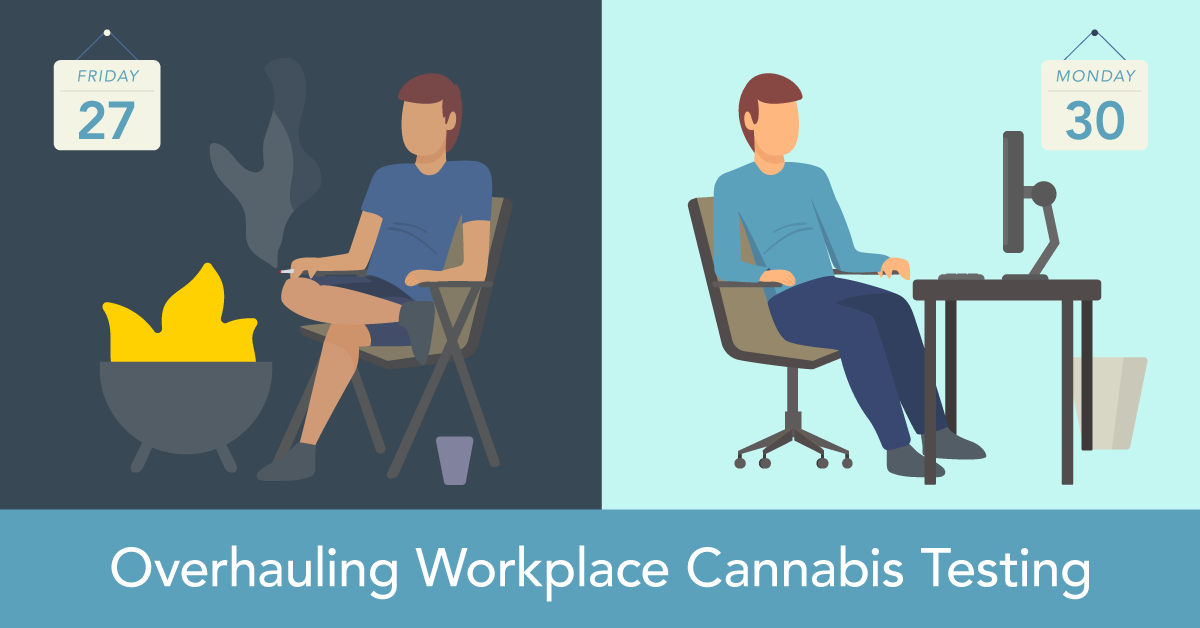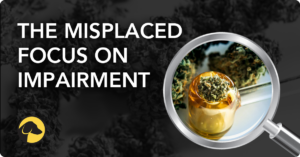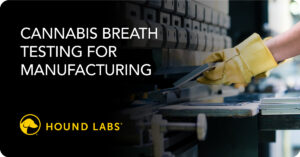
Overhauling Workplace Cannabis Testing Policies
Deterring drug use before an accident or incident is critical to a company’s risk mitigation strategy. This gets confusing in the era of legalization, where employees have a legal right to consume cannabis, often leaving businesses considering how to attract, hire, and retain qualified employees.
To deter drug use safely and proactively in the workplace in the era of legalization, employers should use a cannabis breath test that isolates and detects recent use across the continuum of employment.
FAIR AND EQUITABLE TESTING
Most Americans now support cannabis legalization1, but workplace drug testing has failed to keep pace with prevailing views and legal realities of cannabis drug testing. Policies and programs that narrowly define company actions for positive drug tests resulted in zero tolerance that is no longer feasible in the age of cannabis reform. But shifting laws and rising numbers of employees who use cannabis are impacting how employers will implement workplace drug testing in the future and when and how they will test. The result is a pivot toward fair and equitable cannabis testing practices and policies that utilize modern technologies.
WHAT CANNABIS POSITIVITY RATES TELL US
Recent data2 shows post-accident versus pre-employment cannabis positivity increased nearly two times from 2013 to 2021 in the general U.S. workforce and more than five times for the federally mandated safety-sensitive workforce. Additionally, there was an increase in cannabis positivity across all employee testing categories using oral fluid (over 14% positive) and urine (10% positivity). And post-accident cannabis positives occurred 63.4% more often when compared to pre-employment cannabis positives.
However, conventional cannabis tests of oral fluid, hair, and urine cannot provide the one critical piece of data employers need to make fair decisions—whether employees used cannabis immediately before or during work.
“Simply put, current cannabis tests do not tell the whole story,” says Jaime Feinberg, Vice President of Partnerships for Insurance, Risk, + Safety at Hound Labs, Inc.
A FUNDAMENTAL ISSUE
One of the fundamental issues with cannabis testing stems from the fact that positive results from oral fluid, hair, and urine tests do not isolate recent use and provide very little useful information now that most employees can legally use cannabis. While these tests may indicate an employee has consumed cannabis, they cannot tell employers when that use occurred. Testing policies and technology that remain anchored in the era of zero-tolerance can lead to instances of employees being terminated for a legal activity that has no bearing on performance and job safety if consumed outside of work hours.
“Current cannabis tests, and the way employers historically have used them, can cause problems for cannabis users,” says Feinberg. “Why should a cannabis user be disciplined for legal use when their situation can be like the person who has the occasional glass of wine (or two) to unwind, or someone who cracks open a cold beer after mowing the lawn?”
While workplace drug testing for cannabis continues to be essential to maintain safety and productivity, deter use during work hours, and mitigate risk, it should and can be fair.
SHIFTING TO POST-HIRE TESTING
Pre-legalization, employers could test prior to employment and weed out candidates who tested positive for THC. Since the drug was illegal throughout the U.S., this process effectively deterred cannabis users from applying to workplaces who drug tested. But with cannabis legal to use in many states, this practice is no longer simple to apply or enforce, leaving some employers tempted to remove cannabis from pre-employment drug screening.
However, eliminating cannabis testing altogether may not be an appropriate response for most employers because they still want and need to maintain safety. The proven effectiveness of drug testing as a risk mitigation and deterrence tool saves money and supports safety. Removing it will eliminate those benefits when considering the most used drug in the U.S. The cannabis positivity rate of post-accident test results grew faster than the rate for pre-employment testing. Employees expect safety, too, and trust their employer to maintain a safe workplace, free from preventable workplace incidents.
This suggests businesses may want to consider a nuance to their drug testing policy that provides all the benefits of pre-employment testing but accommodates legal, off-duty adult use of cannabis products. Testing all employees within a predetermined period after they join the company, then throughout their tenure as outlined in a company’s drug testing program, provides a solution for many businesses. This policy balances a company’s use of drug testing as an important part of its risk mitigation strategy while accepting that more and more people can use cannabis legally during their personal time. Post-hire testing promotes safety because it detects and deters on-the-job use throughout a person’s employment continuum—not just before they start the job when their use may have no impact on their work performance. It also promotes equity because a company tests all employees—not only employees in safety-sensitive or entry-level positions.
HOW TO TEST FOR RECENT USE
Employers need a test that specifically isolates recent use so that employees who used cannabis days, weeks, or months before the test do not risk positive results. A cannabis breathalyzer is the ideal tool for post-hire testing because it provides on-location results, quickly giving a green light to most employees who will test negative because they did not use cannabis immediately before or while at work. Cannabis breath testing technology specifically identifies use within the last few hours when it may be relevant to job safety and performance. This means minimal stress, minimal lost work time, and maximum fairness to employees who desire and deserve to keep their personal lives private.
If an employer fires an employee who responsibly and legally uses cannabis, the action can be costly both to employees and their employers. The employee is denied a position or loses a job based on responsible legal use outside of the workplace, while the employer incurs the recruiting, training, litigation, and other costs to replace a skilled employee. Estimates on the cost of replacing an employee can be $10,000 per employee or higher.
CHANGING LAWS REQUIRES UPDATED DRUG TESTING POLICIES
In an era when laws related to cannabis reform seem to shift weekly, overhauling cannabis workplace drug testing to include post-hire and cannabis breath testing is imperative if companies want to future-proof their operations, maintain safety, and retain employees. A drug testing policy based on fairness and equity allows employers to continue to reap the safety and cost benefits while balancing off-the-job use. Utilizing the latest cannabis breath testing technology may help companies adapt more quickly to the swell of new cannabis laws on the horizon.
LEARN MORE
Want to learn more about addressing recent cannabis usage in your workplace policy? Check out this webinar featuring Nina M. French and Jaime Feinberg, WHAT HAPPENS ON 4/20 STAYS ON 4/20: Addressing recent cannabis use in your drug testing policy.
This article was initially published by OH&S – Occupational Health & Safety, an essential information source for safety and health professionals in the United States and abroad. Click here to read the original.

June 2, 2022
By NINA M. FRENCH
Share












